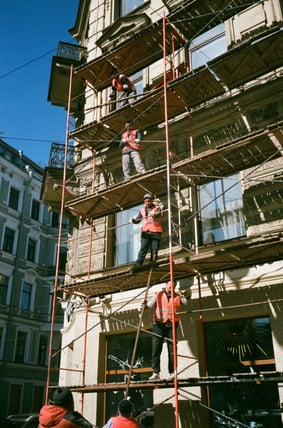If you’re planning on building a build-to-rent property in a city or large metropolitan area, there are some things to consider to help you get the most out of your investment. Investing in cities is different than investing in suburbs or rural areas. Some considerations that we’ll cover below include what types of tenants you’re hoping to attract, what kinds of amenities tenants in urban areas expect, and as always, location considerations.
Location
The location of your property is probably the most important factor in getting the biggest return on your investment, but location doesn’t just mean picking the right neighborhood within a city; it also means picking the right city. If you’re planning to make your investment a long distance investment in a city separate from the one in which you live, you’ll find that some cities are better choices than others. Things such as crime rates, job growth, economic stability, and local landlord-tenant laws all factor into this decision. So what are the best cities to invest in?
According to moneycrashers.com, the top three cities for investing in urban real estate in 2020 are Orlando, Florida, Charlotte, North Carolina, and Houston, Texas. What all of these cities have in common is strong job growth, population growth, and business-friendly economies. However, it is worth noting that Texas and Florida do tend to have high property taxes.
Another important consideration is looking at how landlord-tenant laws vary from state to state. As real estate investor, G. Brian Davis recalls, “I once had an eviction take 11 months in Baltimore because the tenant used every loophole in the tenant-friendly local laws to drag out the process. I lost tens of thousands of dollars on that property.”
Once you’ve decided what city to invest in, location considerations go even deeper. In urban areas, you tend to get a better return on your build-to-rent investment if you build in areas with a sense of community, an attractive urban landscape, and easy access to transit. With an urban build-to-rent, a built in garage or parking spot may be less important than proximity to subways or buses, for example. The lot itself is an important location consideration as well; is it in a loud, high traffic area? Once the house or building is constructed, will some views be obstructed by large, neighboring buildings? None of these possibilities should be overlooked.
Amenities
Tenants in urban areas have become accustomed to having things like on-site laundry or even in-unit laundry - relatively inexpensive additions that could get you a much better return on investment. Security is another huge consideration for tenants in cities, and having features like a virtual doorman or video intercom could help set you apart from other builders/investors. Easy access to shops, gyms, restaurants, and bars are also important considerations as these are the places urban dwellers spend their time and money. If your build-to-rent property is on the larger side with multiple units, consider splurging on amenities such as a gym, sauna, or a swimming pool, as each of these features can directly influence how much you’re able to charge in monthly rent.
Think of Who Your Tenants Will Be
Finally, don’t forget that urban areas attract very diverse tenants and the neighborhood in which you build has a direct link with what kinds of tenants you can expect to have. If it’s a neighborhood with young families, will having outdoor space or even a kids play area on the property set you apart? If the area has older residents or retirees, will including an elevator be something to think about? Will you make the property pet friendly or not? These are all things to consider when thinking about who you expect your tenants to be.

Recent Posts
- Spec Home Loans: Complete Guide to Construction Financing for Builders
- Spec Construction Loans: A Spec Line of Credit Is Worth the Paperwork
- Spec Homes and Pre-Sale Homes: Relative Benefits for a Spec Builder
- Spec Construction Success: Insights for the Investor Builder
- How Is a Spec House Different From Other Kinds of House Construction?
